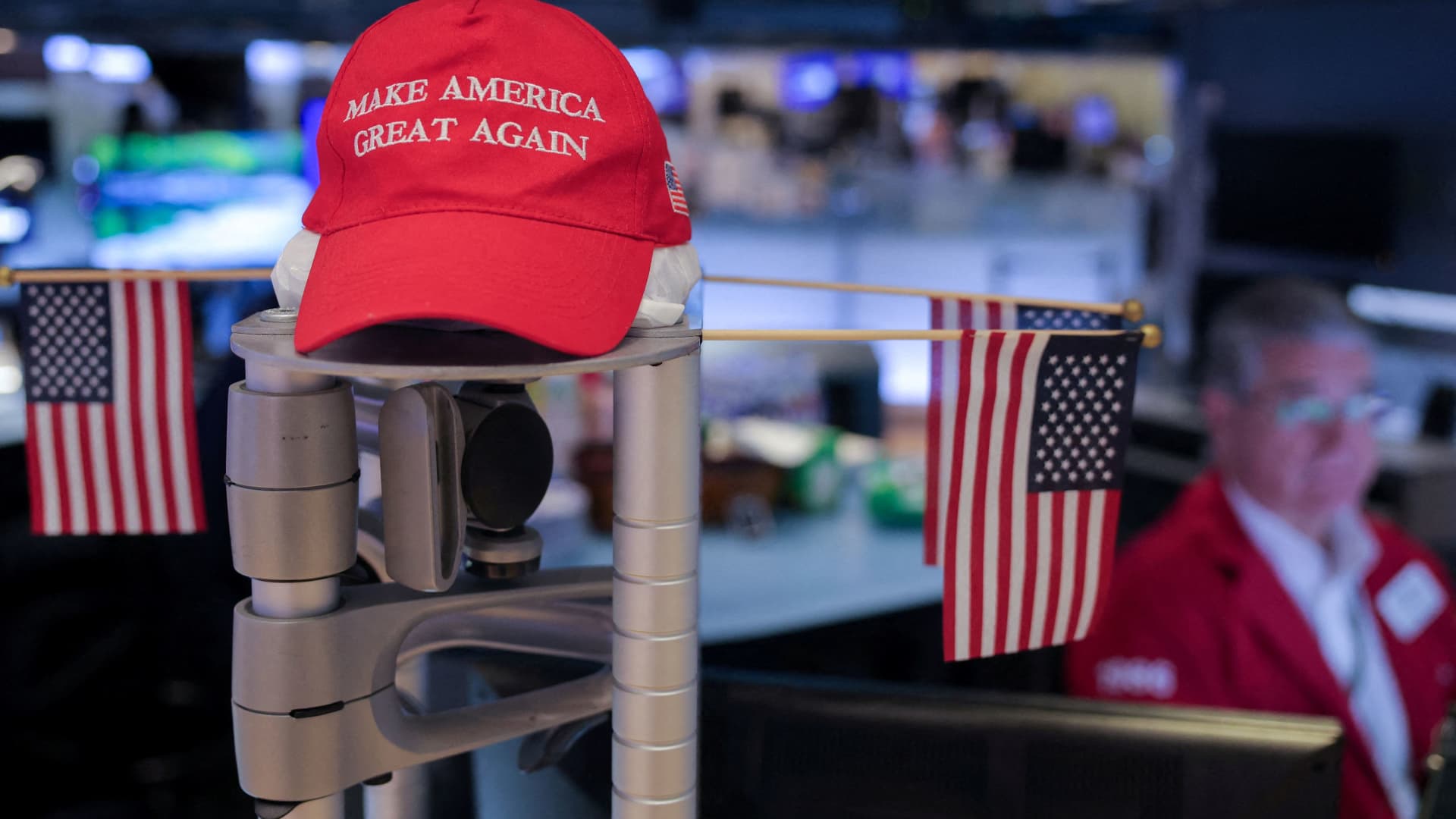The recent shakiness in the stock market has taken a bite out of some of the areas expected to benefit the most under the policies from President Donald Trump. In some cases, post-election gains have evaporated. As of Monday’s close, the S & P 500 is still up about 3.5% since Nov. 5, the last trading session before Trump’s victory. However, it is now negative since his Jan. 20 inauguration. The small cap Russell 2000 , which was seen as a beneficiary of an era of lower regulation and taxes, is now lower since Election Day. Some sectors that were seen as popular “Trump trades” around the time of the election are also struggling. Popular funds tracking industrials — Industrial Select Sector SPDR Fund (XLI) — and materials — the Materials Select Sector SPDR Fund (XLB) — are also down since the election. Both of those include shares of companies that could benefit from a more protectionist trade policy. Meanwhile, the Energy Select Sector SPDR Fund (XLE) is up less than 1% since Election Day and down since the inauguration despite Trump’s promises to support fossil fuel production. One group that has held on to more of its gains is financials, with the Financial Select Sector SPDR Fund (XLF) up 9% since Election Day. But even that fund is on track for a losing February. Outside of stocks, the crypto trade has also lost steam, with bitcoin now back below $90,000 level after hitting the $100,000 mark for the first time in December. The slide comes as uncertainty remains about the extent of Trump’s tariff policies and amid some signs of slowing economic growth. The Federal Reserve paused its rate cuts last month, and leaders in DC have also not yet agreed on a budget plan that would extend the tax cuts from Trump’s first term, which are set to expire at the end of this year. Jason Draho, UBS head of asset allocation and CIO for the Americas, said in a note to clients Monday that investors are starting to worry about “policy error” from the Trump administration. “It’s fair to say that investors have put a lot more probability on a policy put (i.e., market-supportive policies) than a policy error (market-negative policies). But the odds of the latter are creeping up, based on actions thus far and recent data. While a policy error outcome is still unlikely, until that’s clear, the debate will likely generate market volatility, especially in the near term,” Draho wrote. To be sure, the U.S. stock market is still not that far from record highs. And U.S. equities don’t exist in a vacuum, as markets in China and Europe have been strong recently after lagging behind the U.S. in recent years. “The broadening theme is global, and it’s a headwind for U.S. Equities after ~7 years of being global flows being a consistent tailwind,” Raymond James strategist Tavis McCourt said in a note to clients Sunday.





